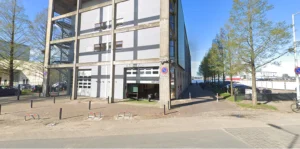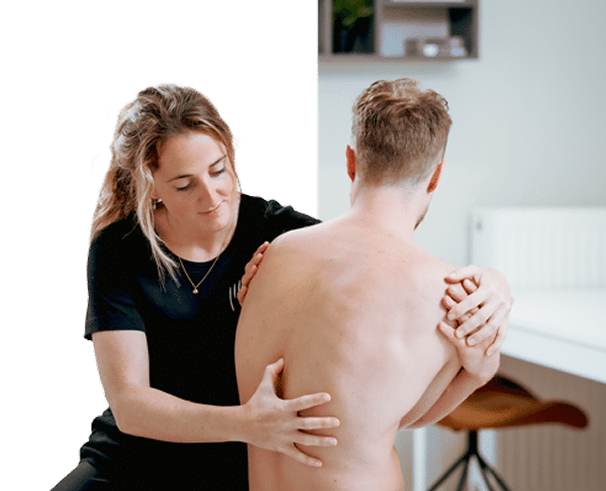Osteoporosis
Osteoporosis, also known as osteoporosis, is the chronic condition in which bones become more brittle due to decreases in bone density and changes in bone structure. As a result, the bone becomes more porous, significantly increasing the risk of bone fractures. Worldwide, 1 in 3 women and 1 in 8 men over the age of 50 suffer from osteoporosis. Women are more susceptible to this condition due to hormonal changes after menopause, which accelerates the process of bone breakdown(Oxford Academic).
How does osteoporosis occur?
Bone is considered a living tissue that is constantly renewed within the body. This process of bone formation and bone breakdown is balanced until you are about 35 years old. After that, more bone is broken down than is made, leading to a decrease in bone density. This natural process is accelerated by several risk factors, such as:
-
- Age: Starting at age 50, the risk of osteoporosis increases significantly.
-
- Hormonal changes: In women, the decrease in estrogen after menopause plays a crucial role. Men can also develop osteoporosis, mainly due to a decrease in testosterone.
-
- Heredity: Osteoporosis may be more common in people whose parents have had osteoporosis or a hip fracture.
- Medication: Corticosteroids (such as prednisone) and antiepileptic drugs are known causes of accelerated bone breakdown(Frontiers).
Symptoms and consequences of osteoporosis
The dangerous thing about osteoporosis is that it often goes unnoticed until a bone fracture occurs. Common symptoms include:
- Spontaneous bone fractures: Especially in the hip, wrist, or spine. Spontaneous vertebral collapse can cause severe back pain and lead to loss of height.
- Altered posture: Sagged vertebrae can cause a crooked back or kyphosis, causing mobility problems and pain(springermedicine.com).
- Slow recovery: Fractures often heal more slowly and can lead to permanent limitations in mobility.
Diagnosis of osteoporosis
The diagnosis of osteoporosis is usually made using a DEXA scan, a test that measures bone density. Low bone density indicates osteopenia or osteoporosis. In addition, a spinal x-ray (VFA scan) can help identify spinal fractures. A blood test may also be needed to check calcium and vitamin D deficiencies(springermedicine.com).
Prevention and treatment of osteoporosis
Treatment of osteoporosis involves a combination of lifestyle changes and medication. The goal is to prevent further bone breakdown and reduce the risk of fractures.
- Nutrition: Calcium and vitamin D are essential for strong bones. Foods such as dairy, green leafy vegetables and fortified foods should be part of the daily diet. Supplements may be prescribed for deficiencies.
- Exercise: Weight-bearing exercises such as walking, stair climbing and strength training help make bones stronger. At The Physio Man, we can help with a customized exercise program that is safe and effective in reducing the risk of falls.
- Medication:
- Bisphosphonates are the most commonly prescribed drugs to reduce bone loss
- Denosumab is prescribed to people who cannot tolerate bisphosphonates and helps stop bone breakdown(Frontiers).
- Romosozumab, a newer treatment, stimulates both bone building and reduces bone breakdown and is used in severe osteoporosis(Oxford Academic).

Reducing risks: fall prevention
A large proportion of osteoporosis complications arise from falls. Fall prevention is therefore essential. Several physical therapists like The Physio Man offer special courses to reduce fall risks and strengthen your muscles and balance. In addition, your physical therapist can offer advice on modifying your home to prevent falls, such as removing loose rugs and installing handrails.
An active step toward stronger bones
Osteoporosis does not have to mean a decline in your quality of life. With the right treatments and lifestyle changes, you can slow and even improve the progression of the condition. Exercise plays a crucial role in this, and it’s never too late to start a targeted exercise program that will strengthen your bones and reduce the risk of falls.
Want to know how you can improve your health and work toward an active future without worrying about osteoporosis? Physio Man specialists are ready to help you with customized therapies and personalized advice. Our physical therapists will help you with exercises, posture corrections and treatments to reduce pain and make your joints stronger.
Make an appointment today at The Physio Man and let our experienced therapists guide you to reduce your osteoporosis symptoms and improve your quality of life.
Why choose The Physio Man?
- Latest treatment techniques
- We look at the body as a whole
- 80% of our patients are complaint-free within a few treatments
- No long waiting lists
- Also open in the evening
At The Physio Man, we offer a wide range of treatment options aimed at reducing symptoms and improving quality of life. For questions or an intake consultation, contact us. Email info@defysioman.nl or call 020-3542926. Prefer to come by? Visit us at Jan van Galenstraat 301 in Amsterdam.


